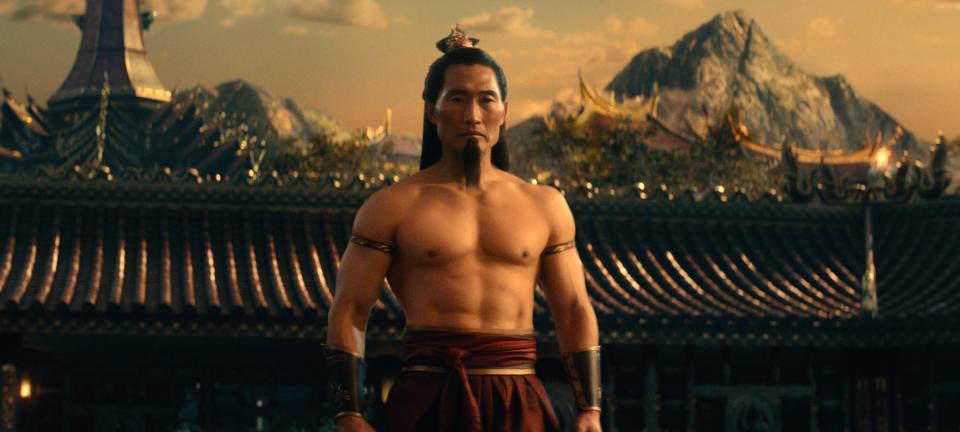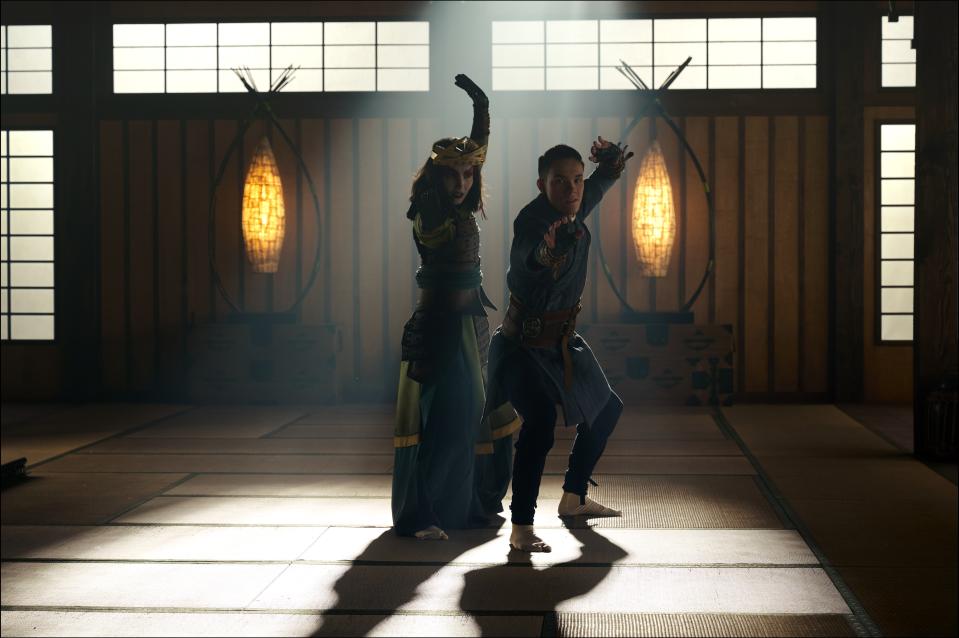In Live-Action ‘The Last Airbender,’ Look for Character Clues in the Fight Choreography

- Oops!Something went wrong.Please try again later.
The ancient art of bending — channeling the energy of water, earth, fire, or air and manifesting them in your hands or at your feet — is the defining characteristic of the world of “Avatar: The Last Airbender.” What makes Aang (Gordon Cormier) the Avatar, after all, is that he’s destined to master all of them.
From the reference videos for the original animated series onward, each of the Four Nations’ bending styles begins with the vocabulary of a real Chinese martial art from our world (Tai Chi for waterbending, Bagua for airbending, Northern Shaolin-style Kung Fu for firebending, and Hung Ga style Kung Fu for earthbending, if you’re curious). But on the Netflix live-action adaptation of “Avatar: The Last Airbender,” stunt coordinator Jeff Aro leveraged some very modern tools to teach bending to the show’s young cast and find how they fight in the real world.
More from IndieWire
Richard Lewis, Comedian and Beloved 'Curb Your Enthusiasm' Star, Dies at 76
Paramount Lost $490 Million from Streaming in Final 2023 Quarter
“We didn’t want to just tell people what to do. We wanted to teach them enough of the language that they could give us feedback, and we could make strong choices specifically for their character,” Aro said. That required giving the “Last Airbender” show’s cast a crash course in bending basics well in advance of the shoot. And Aro did it over Zoom.
“We actually started the training online,” Aro told IndieWire. “We created little workout videos that were introduced as, ‘Here’s your introduction to waterbending,’ and we sent it to all the cast to all train.” Aro wanted everyone on the show to have the same grammatical basics so that as Team Avatar traveled, they could gradually incorporate the elements of different regions’ fight styles into a personal style that expresses what matters to them along the journey.
Aro wanted to make sure that the Netflix series honored the character progressions so beautifully revealed in the original animation’s fight sequences. But there was also room to expand on certain characters’ fighting styles and what they say about the bender (or non-bender) who’s fighting.
“When you have two benders fighting, you’re really just doing martial arts in two different parts of the room. It can be really difficult to define,” Aro said. The unseen third partner is the VFX to be added to the fight sequence, so Aro and his team used previz to figure out what fight sequences could look like, based on storyboards but especially on creative conversations with the directors and cast.
For instance, the duel between Fire Lord Ozai (Daniel Dae Kim) and Prince Zuko (Dallas Liu) that led to the latter being commanded to hunt down the Avatar before he can return home needed to take on a higher level of detail and many more movements in the live-action version. “So with previz, we can try to make sure that the actors have the opportunity to give us input. We’re sending previz via email so that they can [weigh in] in terms of their physical choices, especially when you have athletes like Daniel Dae Kim and Dallas Liu, who are high-level martial artists. You want them to help make those choices [for] that physical conversation between the two of them,” Aro said.

But some of Aro’s favorite work on the series is for characters who seemingly have less choice in how they physically express themselves through fight choreography: non-benders, like Sokka (Ian Ousley), who has a club and a boomerang, or Suki (Maria Zhang), the young leader of the Kyoshi Warriors, which have developed a specific style in order to fight people who can throw fireballs.
“The Kyoshi Warriors have a Japanese influence, so, using martial arts like Aikido and their fans, it was really, really fun to build that physical vocabulary — because it’s not something you saw a ton of in the animation. And working with Ian and Maria on that… Ian was one of my favorite characters to work with because he’s in this world with, like, ‘Hey, what I got is a club.’ But the choices he makes are so phenomenal, and I think having a character like him is what grounds things,” Aro said.
That grounding sense of character expression is what Aro wanted to focus on in the design of all the fight choreography. “Typically, stunts, we rev it in sixth gear all the time,” Aro said. “[but] the hesitation is to be too stunt-y on a project like this, where our vocabulary needs to be carefully chosen [for] the world that we’re helping create.”

If you look closely at the physical movements of the characters in their fight sequences, there are even hints at where the characters could go next. “We put in lots of little, physical Easter eggs,” Aro said. “If we get to do the evolution of these characters, well, Zuko is going to do this and his rage is what’s fueling him, so [let’s plant the basics of it] here. We hope that we get to explore those because the characters develop so beautifully.”
“Beautifully” is perhaps not how the most badass character yet to be revealed in Team Avatar’s journey would describe becoming the greatest Earthbender of all time, but they’re definitely a character that Aro would love to explore. “Her whole personality is amazing,” Aro said. “Our youngest little boy, he’ll gravitate to her because [their energy] is the same, like, ‘I’m not the biggest but I’m the boss.’”
While the tone of the Netflix show isn’t quite as pitched towards the goofs that delight younger audiences, Aro really wanted to imbue the different bending styles with as much of a sense of wonder for kids of all ages so that each character’s fighting style felt like a physical expression of who they are. “I loved watching the choices that the actors were making,” Aro said. “They did that so well in this process and [when] they chose to do it, too. The safest way to do things is to do it in prep when we’re planning and building. To care then, when cameras are not rolling, really makes a huge difference.”
Best of IndieWire
Christopher Nolan Movies, Ranked from 'The Dark Knight' and 'Tenet' to 'Dunkirk' and 'Oppenheimer'
Where to Watch This Week's New Movies, Including 'Argylle' and 'How to Have Sex'
Christopher Nolan's Favorite Movies: 40 Films the Director Wants You to See
Sign up for Indiewire's Newsletter. For the latest news, follow us on Facebook, Twitter, and Instagram.

